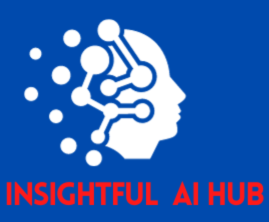Introduction to Text-to-Speech (TTS) Technology
Text-to-speech (TTS) technology has emerged as a transformative tool in today’s digital landscape, leveraging advanced AI algorithms to convert written text into spoken words.
This capability not only bridges the gap between written and spoken communication but also opens up new avenues for accessibility and content creation. TTS technology has become increasingly important across various sectors, from aiding visually impaired individuals to enhancing the efficiency of busy professionals.
One of the primary benefits of TTS is its role in accessibility. By providing auditory versions of written content, TTS enables visually impaired users to access information and services that would otherwise be challenging.
Additionally, TTS supports content repurposing, allowing creators to transform written materials into audio formats effortlessly. This feature is particularly advantageous for podcasters, educators, and marketers who seek to reach diverse audiences through multiple channels.
Another significant advantage of TTS technology lies in its time-saving potential. For professionals inundated with extensive reading materials, TTS offers a convenient solution by converting text into speech, allowing them to multitask and absorb information on the go. This efficiency gain is invaluable in fast-paced environments where time management is crucial.
This article aims to delve into some of the top text-to-speech generators available today, each offering unique features and applications. We will explore tools such as Google Text-to-Speech, Amazon Polly, and IBM Watson Text-to-Speech, among others.
By examining their capabilities, we aim to provide a comprehensive understanding of how these tools can enhance accessibility and content creation efforts. Through this exploration, readers will gain insights into selecting the right TTS tool to meet their specific needs, ultimately leveraging technology to its fullest potential.

Deep Dive into Popular TTS Tools
Text-to-speech (TTS) technology has revolutionized the way we interact with digital content. Among the top TTS tools available, Xspacegpt stands out with its unique feature of converting Twitter Spaces into MP3 audio files and text transcriptions. This tool, leveraging GPT-4.0, excels in generating summaries and mind maps, making it a versatile choice for content creators and accessibility advocates.
Users can explore more about its offerings on the Xspacegpt website.
Gotalk.ai is another remarkable TTS tool known for generating human-like speech across various applications. Its advanced customization options allow users to fine-tune voices to match specific needs, including the impressive voice cloning feature that replicates unique vocal tones. This flexibility makes gotalk.ai a favourite among developers and businesses aiming to create personalized audio experiences.
Detailed information is available on the gotalk.ai official site.
For those seeking multilingual support, Acoust offers an expansive range of natural-sounding voices in multiple languages. Acoust not only excels in TTS but also provides additional functionalities like video creation and AI-driven prompts, making it a comprehensive tool for global content creators.
More insights about its features can be found on the Acoust website.
Voxify sets itself apart with its extensive language and accent options, allowing users to add emotional undertones to speech synthesis. Its competitive pricing model ensures accessibility for a broader audience, including educators and businesses looking to enhance their audio content.
To learn more about Voxify’s capabilities, visit their official page.
Lastly, Voicera offers a swift solution for voice dictation, especially useful for blogs and articles. Its lightweight embed code makes integration seamless, providing a quick and efficient way to add voice functionality to any platform.
For additional details, the Voicera website serves as a comprehensive resource.
Comparative Analysis and Use Cases
When evaluating text-to-speech (TTS) generators, several factors come into play, including language support, voice customization options, pricing, and additional features. This comparative analysis will cover these aspects for five leading TTS tools: Amazon Polly, Google Text-to-Speech, IBM Watson Text-to-Speech, Microsoft Azure Text-to-Speech, and NaturalReader. To provide a clear and concise overview, we have summarized the key features in the table below.
Comparison Table
| Criteria | Amazon Polly | Google TTS | IBM Watson TTS | Microsoft Azure TTS | NaturalReader |
|---|---|---|---|---|---|
| Language Support | 30+ languages | 40+ languages | 25+ languages | 75+ languages | 20+ languages |
| Voice Customization | Neural, Standard | WaveNet, Standard | Neural, Expressive | Neural, Standard | Limited |
| Pricing | Pay-as-you-go | Pay-as-you-go | Pay-as-you-go | Pay-as-you-go | Subscription-based |
| Additional Features | Speech Marks, Lexicons | Multi-Channel Output | Tone Customization | Real-time Translation | OCR Integration |
Use Cases
Each TTS tool excels in different areas, making them suitable for various applications. For instance, Amazon Polly is highly effective for content creators who require extensive voice customization and speech marks for precise audio control. This makes it ideal for creating audiobooks and podcasts.
Google Text-to-Speech is often favored by marketers due to its broad language support and WaveNet voices, which provide high-quality, natural-sounding speech. This is particularly useful for creating multilingual marketing campaigns and enhancing website accessibility.
IBM Watson Text to Speech is tailored for researchers and developers who need tone customization and expressive voices for more dynamic audio output. It is frequently used in educational tools and customer service applications to deliver engaging and empathetic interactions.
Microsoft Azure Text to Speech offers real-time translation and is suitable for global enterprises that require seamless communication across multiple languages and regions. Its integration with other Microsoft services also adds value for businesses leveraging the Azure ecosystem.
Lastly, NaturalReader provides a more user-friendly, subscription-based model, making it accessible for individuals and small businesses. Its OCR integration also makes it a practical choice for converting printed documents into audio format, assisting people with visual impairments or reading disabilities.
By understanding the unique features and potential applications of each TTS tool, users can make informed decisions to select the most appropriate solution for their specific needs.
Conclusion and Recommendations
Throughout this article, we have explored the significant role of text-to-speech (TTS) technology in enhancing accessibility and content creation. As we have discussed, TTS tools are not just innovative but essential in today’s digital landscape, offering a wide range of applications from aiding individuals with disabilities to streamlining the content creation process.
Our analysis of various TTS generators has revealed that each tool offers unique features tailored to different user needs. For instance, xspacegpt stands out for users who frequently engage with platforms like Twitter Spaces, providing seamless integration and high-quality voice synthesis that enhances online interactions. On the other hand, gotalk.ai is particularly suited for those in need of professional voiceovers, delivering clear and natural-sounding speech that can elevate the quality of multimedia content.
For users seeking versatile and user-friendly options, NaturalReader and Voice Dream Reader are excellent choices, offering extensive language support and customizable voice settings. These tools are ideal for educators, content creators, and anyone looking to convert text to speech for various applications.
In light of these insights, we encourage readers to visit the respective websites of these TTS tools to explore their features and capabilities firsthand. By integrating TTS technology into your workflow, you can not only enhance productivity but also make your content more accessible to a broader audience.
The transformative potential of TTS tools cannot be overstated. As we move towards a more inclusive digital environment, the adoption of TTS technology will play a pivotal role in breaking down barriers and facilitating better communication. We recommend that users assess their specific needs and choose the TTS tool that best aligns with their goals to fully leverage the advantages of this innovative technology.







